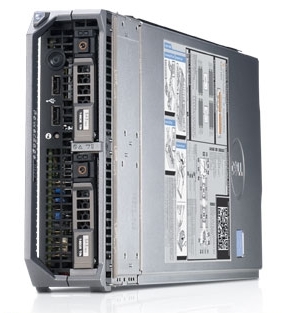IBM officially announced their new blade, the HS23 blade server, and it comes with some improvement.
Monthly Archives: March 2012
Virtualization Performance on Blade Servers
One of the industry-leading independent technology assessment service firms, Principled Technologies, just updated their site with a ton of white papers covering performance on just about any product or technology. You can check out their website at http://www.principledtechnologies.com/default.htm for the complete list, but I wanted to give you the links to their papers that cover virtualization performance on blade servers.
HP Announces Proliant BL460c Gen 8 Blade Server
 HP launched the new ProLiant BL460c Gen8 blade but you would have never known about it. With the prelaunch work done it February it seemed like a non event. The bulk of the goodness on the Gen 8 updates are across the ProLiant family so I will try to keep my focus on those that pertain to the BL460c.
HP launched the new ProLiant BL460c Gen8 blade but you would have never known about it. With the prelaunch work done it February it seemed like a non event. The bulk of the goodness on the Gen 8 updates are across the ProLiant family so I will try to keep my focus on those that pertain to the BL460c.
Dell’s PowerEdge M620 Blade Server Offering Up to 768GB RAM
( UPDATED 3/7/12) With the launch of Intel’s Xeon E5-2600 processor, Dell revealed the details of the new PowerEdge M620 blade server. Offering an industry first 24 memory DIMMs in a half-height form factor, the M620 offers up to 768GB of RAM along side the newly announced Intel E5-2600. The Dell PowerEdge M620 also comes with the ability to chose from a variety of LOM (LAN on Motherboard) cards – a feature first seen in the PowerEdge M710HD and M915 last Summer. Formerly known as the Network Daughter Card, the newly renamed feature, called Select Network Adapter, is a removable network card that gives buyers the option of choosing from Broadcom, Intel or QLogic adapters – each offering up to two ports of 10Gb. Since it is removable, it offers investment protection as new technology becomes available. For more features and details about the M620, see below.
UPDATED 3/7/12) With the launch of Intel’s Xeon E5-2600 processor, Dell revealed the details of the new PowerEdge M620 blade server. Offering an industry first 24 memory DIMMs in a half-height form factor, the M620 offers up to 768GB of RAM along side the newly announced Intel E5-2600. The Dell PowerEdge M620 also comes with the ability to chose from a variety of LOM (LAN on Motherboard) cards – a feature first seen in the PowerEdge M710HD and M915 last Summer. Formerly known as the Network Daughter Card, the newly renamed feature, called Select Network Adapter, is a removable network card that gives buyers the option of choosing from Broadcom, Intel or QLogic adapters – each offering up to two ports of 10Gb. Since it is removable, it offers investment protection as new technology becomes available. For more features and details about the M620, see below.
Intel Announces Sandy Bridge, aka Xeon E5-2600
Intel announced on Tuesday their next generation of 2 socket CPU – the Intel Xeon E5-2600. Formerly code named, “Sandy Bridge,” the E5-2600 is a follow on to the Intel Xeon 5600 series family and offers a real performance increase. In fact, Intel is boasting performance increases from 43% to 62% (depending on the vendor and benchmark.) What is contributing to this massive increase in performance? Let’s take a look.